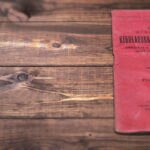Brief history of BBVA (XIII): resolving the monetary problem
After the Nationalists victory, Franco’s government had to face numerous problems. Some required a quick solution to lay the foundation for reconstruction as soon as possible. One of the issues that needed to be addressed was the existence of two currencies, the one coined by the winners and the Republican currency. This situation arose as a result of the rebel faction’s decisions made throughout the war.

Measures taken during the war
Franco’s government had adopted a series of measures from Burgos in the conflict in order to damage the Republican economy. These decisions were also intended to curb possible situations of excessive inflation and panic over coins and bills. The blocks imposed by the Nationalists had an impact during the war, but were especially decisive after it ended. It wasn’t just about putting a stop to printing money. The blocks also affected the account balances of the citizens and companies on the Republican side who then escaped the control of the Nationalists.
On November 12, 1936, the Bank of Spain in Burgos made its first significant decision regarding the enemy. Not even four months had passed since el uprising and the Nationalists decided to not recognize the validity of any currency issued by the Bank of Spain in Madrid starting July 18, 1936. For the rebel faction, only money in circulation from the Second Republic and money coined in Burgos was valid.

Captaincy General Palace in Burgos where Franco was named Head of State
Bank deposits and payment obligations were also subject to severe measures by the Franco regime. On July 1, 1937, instructions were issued to savings banks and banks saying that account balances should be set based on the date the town was “freed” and that it was “well understood that the account balance is subject to the result of any official clearances that may occur.” These instructions were used to block accounts until the 1938 Block Law was passed.
On October 13, 1938, the Block Law entered into force, invalidating certain amounts of money and credit whose assessment was postponed until the end of the civil war. The new rule included 11 highly restrictive articles:
• Any account, regardless of when it was opened, that belonged to the Republican Treasury, political party or union associated with the Popular Front, would not receive any reimbursement.
• If the accounts from freed locations had been opened after July 18, 1936 they were automatically placed on hold. If they had been opened prior to this date, only the account balance generated since this date would be placed on hold.
• Similarly, account balances for those “notoriously characterized as a participant in the enemy’s public administration”.
Without a doubt, Franco only considered valid money issued and account balances that existed prior to July 18th. Any other monetary situation other than these two assumptions was questioned and subject to the discretion of the Nationalists.
Money after the war
These and other measures adopted during the war had enormous repercussions during and after the war ended in 1939 when the complicated and possibly unjust task of unification was attempted.
The Republicans maintained their position of issuing money throughout the three year period despite the decisions made by Franco’s economic team. So much so that once the conflict ended, Spaniards had bank accounts and money from both sides, depending on their luck. Since Spain had a very significant problem to solve with Nationalist and Republican money in the hands of companies and citizens, the victorious side’s government started working to find a solution that would allow for monetary reunification as soon as possible.
Right after the conflict ended, the Commission to Study the Block Regime established three criteria for money. Presided by José Larraz, who became the first Finance Minister in the Franco regime shortly after, invalidated the bills put into circulation by Republican authorities after July 18th, allowed the banknotes circulating in the Republican area to be exchanged before the same date and recognized the balances for deposits in credit institutions on July 18, 1936.

José Larraz, first Finance Minister after the war
Several months later, on December 7, 1939, a law was enacted that regulated the unblocking Larraz was also carrying out. It was a law that corroborated the 1938 block law in the sense that after the war, the monetary issues that had not been resolved were addressed once the statistics and dates the locations were “freed” became available.
The unblocking law suspended the blocking mandated under the law from October 13, 1938 and the same day the war ended. Its primary impact was giving value to the obligations acquired in Republican territory after July 18th. It did so through percentages on a regressive scale over time, given the exponential increase of inflation throughout the conflict.
The value of account balances was determined according to the following scale (depending on the date):
• From July 19, 1936 to October 31, 1936: 90% of the nominal value.
• Up to February 28, 1937: 80%.
• Up to June 30, 1937: 65%.
• Up to December 31, 1937: 40%.
• Up to June 30, 1938: 20%.
• Up to December 31, 1938: 10%.
• After January 1, 1939: 5%.
After these measures entered into force, the necessary monetary reunification could take place and banks could redo their accounting after three years of great difficulties reflecting their balances. Even though this allowed the economy to begin a new stage, it would be highly unfair not to note the tremendous losses for poor citizens from the percentages the law applied, making many Spaniards endure tremendous hardships and complete devastation.